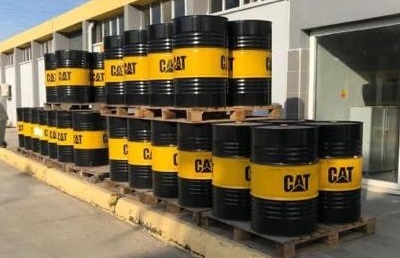ROTEX GmbH Machinery and Vickers sealants
 Polyurethane Sealant VS Silicone Sealant – Difference Between Silicone and Polyurethene Sealant
Polyurethane Sealant VS Silicone Sealant – Difference Between Silicone and Polyurethene SealantA sealant is a versatile material, whether it’s silicone sealant or polyurethane sealant.
Either way it forms an integral part of most people’s toolkit – DIY or Professional.
If you’re interested in doing jobs around the house or you’re part-way through a Professional renovation project such as bridge building or even Coach Building panels.
Whether you’re planning to modernise a property or revamp the bathroom, here’s one thing we know.
It’s highly likely that in selecting the best sealant for the job, you’re given it some serious thought.
Which is no easy job.
There are various forms of sealant or mastic sealant available, so which is the best option for you.
Here’s why it is so important to spend time weighing up the options.
Hopefully, this guide will provide the regarding the difference between silicone and polyurethane sealant.
A brief introduction to mastic sealants
A sealant is a form of material, which is used to seal gaps and holes to make something airtight or watertight.
When you use sealant, you effectively form a seal, which prevents the movement of fluids and liquids.
Sealant is sometimes compared to caulking.
The main difference between building caulking and sealing is the flexibility of the seal. If you include mastic sealing in this equation sealants can not only seal but can also be used as an effective adhesive.
Sealants tend to be made from much more flexible materials.
This makes them useful for areas and joints where a degree of contraction or expansion may occur.
Polyurethene Sealant Properties
Mastic sealants such as polyurethane tends to be especially used in professional industries such as bridge building or automotive coach building. It’s hard wearing approach and exceptional adhesive properties means it works well for professional applications where strength and speed are crucial.
Polyurethene sealant can also be used effectively in joinery because the sealant cures quickly and exceptionally hard into wood joints. These joints can then be sanded and painted over for a top quality finish.
They are not the same as adhesives, but it is possible to utilise sealants that have adhesive properties.
Sealants are used widely, and may come in handy for those working in the following industries:
construction
automotive
engineering
aerospace
marine
joinery
road building
bridge building
As well as those with an interest in DIY and property maintenance.
There are many different forms of sealant both silicone and polyurethane sealants.
This guide will focus on silicone and polyurethane sealant.
Although these sealants have similarities, there are some significant chemical differences.
Chemical difference between silicone sealant and polyurethane sealant
Organic vs In-Organic
One of the principal differences between silicone and polyurethane sealants is the chemical composition.
Silicone is an inorganic substance, while polyurethane is organic.
The primary difference between organic and inorganic substances is the presence of carbon.
Organic compounds contain a carbon atom.
In most cases, a hydrogen atom is also present.
With an inorganic substance, it’s uncommon for either atom to be present.
Polyurethane is a polymer, which comprises of a series of organic atoms connected by carbamate.
Silicone is a unique material because it contains both inorganic and organic compounds.
These synthetic polymers comprise silicon and oxygen atoms, which are joined using C-Si bonds.
The makeup of the chain exposes the organic elements of the structure to external influences.
This is why silicone makes such a versatile sealant for DIY as it can do most jobs satisfactorily – it’s non organic composition makes it fairly dependable across the board and long lasting.
Silicone is commonly used in construction and the development of paint and food products.
Chemical Breakdown
The chemical makeup of both silicone and polyurethane sealant are important.
This is because the composition affects the breakdown of the materials.
When organic and inorganic substances are exposed to UV light from the sun, the way they react differs.
Inorganic materials are less responsive to UV rays than organic chemicals.
In the long-term, polyurethane, an organic material, will revert back to its natural state in response to UV exposure.
This affects both the lifespan and versatility of polyurethane sealant.
Polyurethane sealants set exceptionally fast and exceptionally hard as the organic compounds react faster with UV light. This makes them especially useful for professionals working outside in industries such as road and bridge building. Polyurethane still has sealant and adhesive properties that exceed silicone and the fast acting nature helps project planning.
Tags
Sealants
Pu sealants
Polyurethane
Polyurethane sealants
What is a polyurethane sealant?
Where and how to use Polyurethane sealants?
Vickers MASTIC PU SEALANT
Vickers Sealants
Vickers Pu sealants
Vickers Polyurethane sealants

















